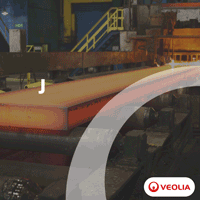Konecranes Says Its Hoist Business Can Stand on Its Own Financially
08/24/2016 - Had it been a stand-alone entity, Konecranes’ STAHL CraneSystems business would have posted earnings of EUR30 million before interest, taxes, depreciation and amortization in 2015, the company said on Thursday.
The company disclosed the figure as it shops around the business, which it must divest to satisfy regulators looking at its US$1.3 billion acquisition of the material handling and port solutions unit at Terex.
STAHL CraneSystems makes hoists, winches and crane components. It employs approximately 700 people and posted EUR145 million in external sales in 2015, according to Konecranes.
Konecranes said it is targeting EUR140 million per year in synergies, mostly on the cost side, through the Terex acquisition.
“Overall, synergies will come from procurement, including supply-chain optimization, insourcing/outsourcing and freight and logistics efficiency. Another significant contribution to synergies will be made from operations, including manufacturing footprint and capacity utilization,” Konecranes said in a statement.
“A third source of synergies will be (selling, general and administrative expenses), including broader SG&A efficiencies, IT system consolidation and engineering and (research and development) optimization,” it said.
STAHL CraneSystems makes hoists, winches and crane components. It employs approximately 700 people and posted EUR145 million in external sales in 2015, according to Konecranes.
Konecranes said it is targeting EUR140 million per year in synergies, mostly on the cost side, through the Terex acquisition.
“Overall, synergies will come from procurement, including supply-chain optimization, insourcing/outsourcing and freight and logistics efficiency. Another significant contribution to synergies will be made from operations, including manufacturing footprint and capacity utilization,” Konecranes said in a statement.
“A third source of synergies will be (selling, general and administrative expenses), including broader SG&A efficiencies, IT system consolidation and engineering and (research and development) optimization,” it said.



-(220-x-200-px)-(130-x-130-px)-(220-x-200-px).jpg?lang=en-US&ext=.jpg)
.gif?width=200&height=200&mediaprotectionhash=ddb07947ad3b4ab959a83714461eccd5c6895f370695eb035a9ff7aa736f8ad9&ext=.gif)





